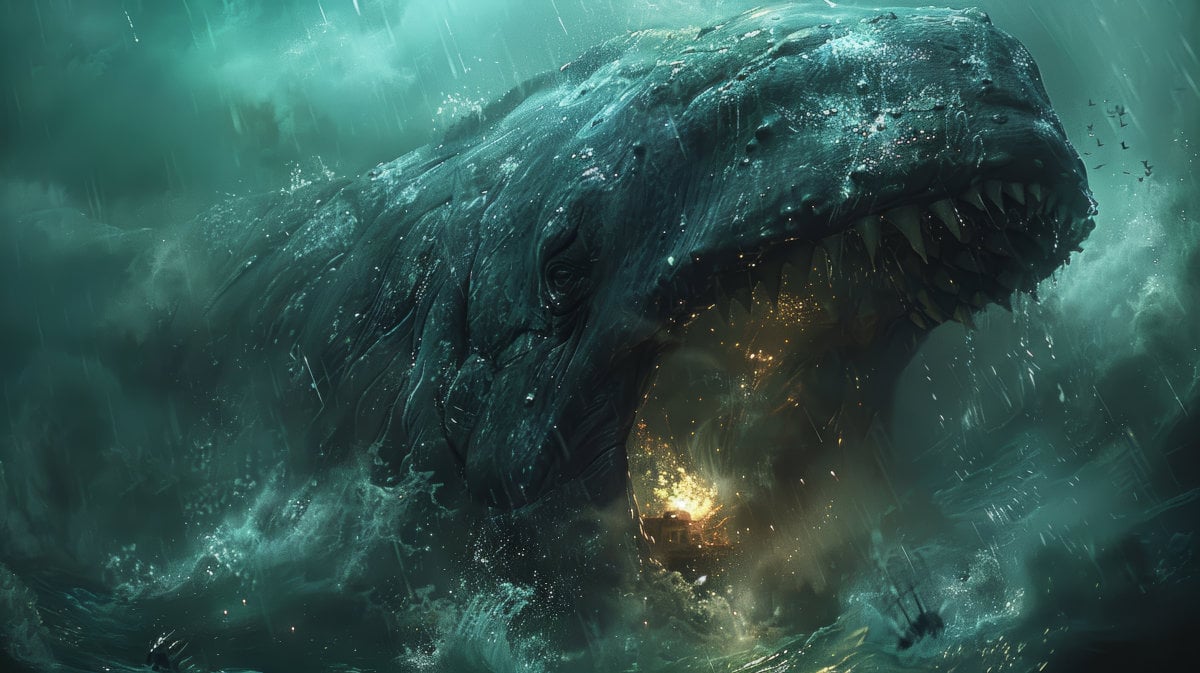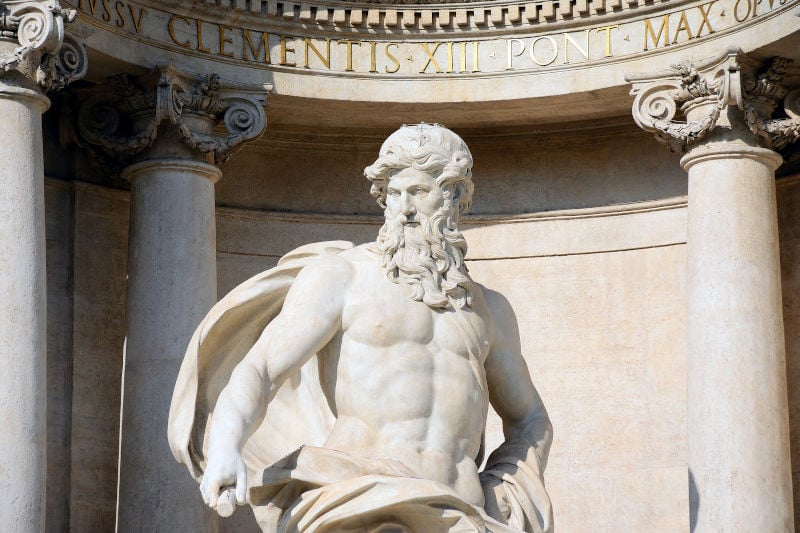
The Symbolic Sea Through the Ages: Myth, Monsters, and Scientific Inquiry
Since ancient times, the sea has served as a profound symbol, embodying the vastness of human emotion and the mysteries of the unknown. From ancient myths, monsters, and deities to timeless works of literature, its waves have represented freedom, danger, and the depths of the human psyche. The ocean, often perceived as a reflection of humanity’s relationship with nature, has been understood as the source of life and a vital force throughout history.
Many creation myths from diverse cultures trace their origins to a primordial aquatic abyss, a formless chaos from which life emerged. In Egyptian mythology, the universe began with the Nu, an endless expanse of water. From this primordial sea, Atum, the god of creation, arose, bringing forth the air (Shu) and moisture (Tefnut) to shape the cosmos. Similarly, Hindu tradition, dating back thousands of years, describes Brahma as having emerged from a lotus flower blooming from Lord Vishnu, the creator god. In both narratives, the sea was not just a backdrop, but a crucial element in the genesis of existence itself.
- Perseus and the Legendary Rescue of Andromeda: Slaying of a Dangerous Sea Monster
- Mythological Sea Serpents And Lake Monsters Versus Scientific Sharks And Surviving Dinosaurs
The Greco-Roman worldview added to this ever-expanding narrative, believing that the earth was encircled by Oceanus, a great world river that birthed all seas and rivers. Oceanus was not merely a physical entity; he personified the boundary of the known world and was integral to their cosmology. The moon, sun, and stars were thought to arise from this mighty river, emphasizing the sea's central role in the universe. Moreover, the sea was home to numerous deities who governed its tumultuous waters and represented the duality of the ocean as nurturing and destructive.

Oceanus – Trevi Fountain in Rome. (Livioandronico2013 / CC BY-SA 4.0)
These stories serve as foundational for oceanic beliefs. In its essence, the act was a symbiosis between land and sea, both a separation and a union of everything as a complex, interdependent organism. In many myths, elements of fire as the sun interact with primordial water, defeating it and bringing forth light from the darkness. The Milky Way, seen as cosmic foam, dispersed light, rain, mist, and milky matter unto the earth, fostering life. The ocean was what remained of the beginning and many of the creatures from creation continued to exist. They held up the earth, stirred the tides, shook the ground, or spread their veins into the land as rivers. They were ordinary creatures or colossal giants, hiding in the deep ocean or encompassing the earth. Naturally, alongside them were the gods and other enigmatic entities that dominated the open waters.
The Sea’s Divine Masters
Not all the gods associated with creation were also associated with the sea. Atum was the manifestation of the sun, as was Ra. Vishnu is the guardian of the universe and Brahma is a creator. As religions evolved, specific deities became personifications of various bodies of water that the cultures encountered. The Egyptians did not have a sea god, rather they had various gods that were tied to the Nile River, such as Tefnut, Hapi, Khnum, and Anuket. Hindu religion, on the other hand, has Varuna, one of the earliest deities in the pantheon and the god of oceans, water, and the sky. Being a god that rules the sky and water, as he who encompasses all, he is intrinsically connected to the cosmic ocean from which all things originated. He is additionally connected to the spiritual, moral laws that guide the universe, the primordial link between gods and humans.
The Greeks experienced a fascinating evolution in sea deities. One of the earliest known deities was the eldest of Titans, Oceanus, son of the sky (Uranus) and earth (Gaia). He was the godly personification of the Atlantic, which was believed to be the ocean (or river) that encircled the earth, as previously mentioned. Another early sea god was Pontus who, as with Oceanus, was later replaced with the revered Poseidon. Pontus’ son was Nereus, the Old Man of the Sea, extraordinarily wise and prophetic. Residing in the deep Aegean Sea, he would surface to appear to mortals in shifting forms to share his many prophecies. It was believed that he could see into the darkest realms of the sea, and with this hidden knowledge, intuitively understood the past, present, and future. His daughters were the Nereids and his official occupation, aside from prophet, was as the Herdman of Poseidon’s seals, second in command, and protector of the island of Lemnos.
And, of course, there was Poseidon (Neptune), lord of the deep, master of the sea, storms, and earthquakes. The Mediterranean and surrounding areas were essential in commerce and political relations, an unavoidable aspect of a prosperous society. The Greeks were dependent on yet extremely weary of open water; therefore, Poseidon was seen as a god with an unpredictable temper. As such, the earthquakes that swayed the land were equally unpredictable and perilous. When those who ventured out to sea suffered, it was by the hand of Poseidon. He lived in a glorious palace beneath the water and rode the waves atop his chariot drawn by horses of the sea. His wife, Amphitrite (Salacia) was a beautiful nymph and gentle guardian. Along with her sisters, she protected sailors, keeping winds and waves at bay. Together, Amphitrite and Poseidon had a son, Triton, messenger of the sea. His conch shell horn echoed across the ocean and sea to still or strengthen its billowing waves.
Aegir was the Norse god of the ocean, dwelling in the coldest depths of the Northern Atlantic, and described as having the appearance of an old man with gangly, jagged fingers. His brothers were said to be Kari (air) and Loki (fire). Having belonged to an old dynasty, he was not associated with the Vanir, Aesir, Elvin, dwarf, or any other clan. Within his watery realm, he was considered all-knowing and all-powerful, regularly taking pleasure in the plights of sailors by maliciously plucking them from their overturned ships and pulling them beneath the waves. Ran, wife and sister of Aegir, was the goddess of death and the sea. Her name meant robber, and as expected, she was equally maniacal. She craved the glimmers of gold, prowling near coastal rocks to lure victims to their demise, entangling them in her net, and seizing their prized gold to decorate her great underwater hall. It was believed the bioluminescent flickers of the Northern Sea were associated with Ran. Sailors would appease the goddess by carrying gold on them in hopes of her taking it rather than their lives.




